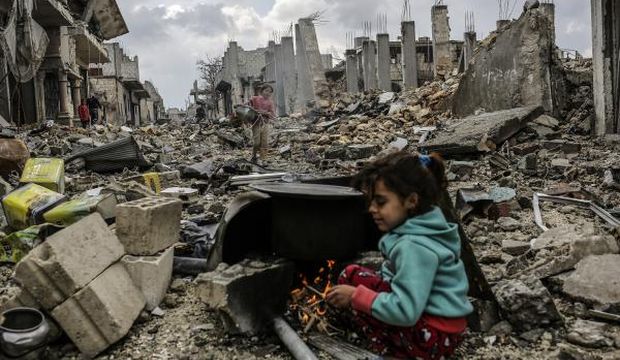A few days ago, members of the UN Security Council watched a video showing a Syrian doctor attempting to rescue children who had allegedly been the victims of a chlorine gas attack by Syrian government forces. After viewing the video, the United States’ ambassador to the UN, Samantha Power, commented: “If there was a dry eye in the room, I didn’t see it.”
There are clearly many officials around the world who are still moved by the plight of the Syrian people—to tears, in this case. But this is perhaps what is most surprising about the above incident. For in recent months, when the barbarity of the Islamic State of Iraq Syria (ISIS) has come to the fore, the crimes of the Assad regime have almost been airbrushed out of existence, sometimes even being downplayed or tacitly accepted.
We are now in dire need of any way to help us counter this widespread collective apathy toward the crimes of the Syrian regime and this tragic crucible of death devouring the country. For its seems that neither the reports of the barrel bombs falling over schools and homes in Aleppo, the images of countless bodies piled up underneath the rubble, nor even the image of that horse—dying alone, a victim to a tragedy he cannot possibly comprehend—are together capable of shaking us from our collective indolence towards what is happening in the country.
One recent example of what I am referring to can be represented in the coverage and reaction to the recent crisis in the Yarmouk camp for Palestinian refugees, which lies on the outskirts of Damascus. The recent events there, which saw ISIS battle other groups in an attempt to control this crucial entry point into the Syrian capital, received much media coverage. But the camp—in reality a suburb of Damascus for Palestinian refugees—has been continually targeted by the Syrian regime ever since the start of the conflict in 2011 in a relentless onslaught that has brought hunger and death to the people living there. This, by contrast with the ISIS situation, has received virtually no coverage at all.
We must reevaluate our outlook toward the tragedy in Syria, for which the regime of Bashar Al-Assad must bear the largest weight of responsibility among all those involved. The reality we are facing, however, is that the current malaise and fatigue toward Syria is acting as a wall against which the bodies of the dead are piling up. This lethargy is even beginning to appear in response to ISIS’s crimes, to which we are becoming increasingly, and disturbingly, desensitized.
Two videos recently emerged online that encapsulate this attitude, one from Aleppo and the other from Yarmouk.
In the Yarmouk video, we see two young men strolling through the camp showing us the scenes which they encounter daily—while also making light of the suffering, death, hunger and continual onslaught which the camp suffers on a daily basis.
The Aleppo example is a video entitled Moo Ma’qoul (a common Arab expression meaning “unreasonable”). In the video, a boy named Qusay makes fun of a young woman who uses the phrase repeatedly to raise skepticism over the Syrian regime’s responsibility for dropping barrel bombs over the city. But after ridiculing this rightly preposterous notion, little Qusay himself makes light of the barrel bombs being dropped by the regime over his hometown and indeed his own school.
But let us see these strange videos for what they really are. The unusual sarcasm and humor expressed in them are but psychological last lines of defense for the protagonists, who must see and experience unimaginable death and destruction every day. Behind the sardonic humor and the wry smiles lie pent-up emotions of blame and rage: what we see in these videos are nothing if not defense mechanisms concocted by these young people to shield themselves from the specter of crushing trauma.
Just two days before Qusay’s video appeared online, journalists received a photograph from Aleppo, the little boy’s city, showing the aftermath at a school that had been obliterated by the Assad regime’s barrel bombs. The photograph was horrific: it showed two female teachers, both sat at their desks, their bodies almost mummified amidst the smoke and rubble and dust. I say “almost mummified” because something was missing: both of them were headless. Thankfully, standards of responsible media prevailed and most if not all outlets did not publish the photographs. But videos making fun of the image immediately followed. We must find a way to treat this shameless brand of apathy toward human suffering. But at the same time, it may be too much to ask of those who witness and experience such suffering—and must somehow shield themselves from it—to refrain from utilizing what is perhaps their only bulwark against that suffering.
Satire and humor are the weapons used by a defenseless Syrian population ever since the start of their revolution and then throughout the war and death and destruction which followed it. Today the global concern for Syria has taken a backseat, but these weapons of the Syrian people—perhaps their only remaining weapons—remain. Will the international community be satisfied with shedding the occasional tear over Syria now and again, while the Syrian people continue to make light of their own unimaginable pain?
That would be unreasonable. Indeed, it is all “moo ma’qoul.”
